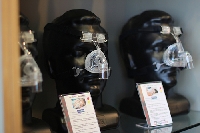How common is sleep apnea
By Catalogs Editorial Staff

How common is sleep apnea and what can be done to fix it
A good night’s rest is something many of us take for granted. For others, though, rest is fleeting. Due to a condition known as sleep apnea, untreated sufferers may stop breathing throughout the night, not allowing for enough oxygen to reach the brain or rest of their body.
So, how common is sleep apnea? And what can be done about this scary disorder? Below, we’ll take a look at what’s a relatively widespread disease, its potential risk factors, links to educational sites, and options for treatment. For relief, read on!
What Is It?
Sleep apnea is a serious disorder in which a person’s breathing may pause, or stop, during the night. In many instances, this stoppage of breathing can happen 30 or more times an hour; each pause may last from seconds up to a few minutes in time.
A chronic condition which may disrupt rest patterns, many times the disorder goes unnoticed by professionals as it’s difficult for doctors to detect potential symptoms on routine checkups.
~
There are two different types, as well:
- Obstructive sleep apnea (OSA) –This variation is caused by a blockage of one’s airway; most of the time it occurs when soft tissue at the back of the throat collapses during slumber.
- Central sleep apnea –Whereas in OSA the airway becomes blocked, the brain is at fault — It fails to signal your muscles to breathe for moments at a time due to an instability in the respiratory control center.
Risk Factors
Almost anyone can be affected, but those who exhibit these following traits may have a higher risk factor. Those who are:
- Male
- Overweight
- Over the age of 40
- Have a large neck size, which means over 17 inches in men and 16 inches or more in women
- Possess a small jaw bone, large tongue, or large tonsils
- Have a family history of the disorder
- Are dealing with gastroesophageal reflux disease (GERD)
- Have nasal obstruction from s deviated septum, sinus issues, or allergies
According to the National Heart Lung and Blood Institute (NHLBI), it is a common condition for the general public. As shown above, being overweight can be a strong indicator of potential risk; around half of the persons afflicted are overweight. Even young children who are overweight may find themselves at a higher risk factor.
High blood pressure is usually present with the disorder: diabetes, smoking, metabolic syndrome, and more, can be potential causes, as well.
Potential Effects
For those suffering from the disorder, it’s important to seek help. Sometimes this is a difficult proposition as only a loved one or someone sharing the bed with you may notice anything out of the ordinary.
Loud and chronic snoring — along with choking or gasping — may be indicators of a potential issue. For more information on the major signs and symptoms to look for, head over to the NHLBI.nih.gov website to learn more.
Without the proper diagonsis and treatment, patients may find themselves dealing with health problems such as:
- Stroke
- Depression
- Increasing of ADHD symptoms
- Diabetes
- High blood pressure
- Heart failure
Diagnosis and Treatment
One can take part in a polysomnogram (PSG) — or a sleep study — in order to record one’s brain activity, heart rate, eye movements, and blood pressure, during rest. As well, doctors can perform a physical exam, study family histories, and even use a home-based monitor that’s similar to the PSG.
Simple lifestyle changes can also to alleviate problems: cut down on alcohol, lose weight, rest on your side, quite smoking, etc. Mouth pieces (for the mild variation) and breathing devices like the CPAP (for moderate to severe apnea) can be used to treat the malady. Surgery may also be done to widen one’s breathing passages.
So, how common is sleep apnea? According to most experts, it’s a frequent ailment that can be difficult to diagnose. But, with a little help from your loved ones and an understanding of your own symptoms, it can be a treatable disorder.
Resources:
NHLBI.gov: What is Sleep Apnea.
WebMD: Sleep Apnea.
Above photo attributed to Rachel Tayse
Popular Savings Offers


.png)





.jpg)


.png)